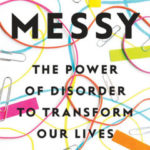
The “positive feeling of being in the presence of something vast that transcends our understanding of the world” is how Paul Piff, assistant professor of psychology and social behavior at the University of California, Irvine, and Dacher Keltner, professor of psychology at the University of California, Berkeley, describe awe. The two researchers have collaborated on several recent studies focused on this emotion, and summarized their results in a
The two researchers have collaborated on several recent studies focused on this emotion, and summarized their results in a New York Times article. Their conclusion: Experiencing “awe helps bind us to others, motivating us to act in collaborative ways that enable strong groups and cohesive communities.” Sounds like what conferences seek to facilitate, no?
How might Piff and Keltner’s extrapolations underpin some common meetings-industry practices with behavioral research and offer deeper implications for face-to-face events? We’re glad you asked.
FILLING A VOID Piff and Keltner make the case that our culture today is awe-deprived, since we spend “more time working and commuting and less time outdoors and with other people.” This suggests that face-to-face events might take on a more profound role in attendees’ business and social lives than in the past.
The research team also points to data indicating that attendance at arts events — including live music, theater, museums, and galleries — has dropped in recent years. So by holding receptions at special-event venues like museums, galleries, and theaters, and by adding short, live performances to general sessions, meeting organizers are sprinkling in moments of awe that more than a few attendees may lack in their day-to-day lives.
CONNECTING WITH OUTDOORS Even the simple act of “looking at trees, night skies, [and] patterns of wind on water” can induce goose bumps, according to Piff and Keltner. All the more reason to hold networking events in hotel and convention center spaces that offer jaw-dropping views of nature or an impressive cityscape, and to prioritize outdoor breaks.
AV LENDS A HAND Subjects in one of the research duo’s experiments who watched a five-minute video of nature scenes instead of participating in other activities that produced feelings of pride or amusement were “more cooperative, shared more resources, and sacrificed more for others.”
On a subliminal level, awe-inspiring on-screen scenes can foster a sense of community among the audience — and may even encourage more people to volunteer for your on-site CSR project. “In the great balancing act of our social lives, between the gratification of self-interest and a concern for others, fleeting experiences of awe redefine the self in terms of the collective,” the researchers said, “and orient our actions toward the needs of those around us.”




